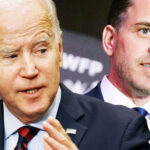By Jeff Carlson
Commentary
Last week, 21-year-old low-level Massachusetts Air National Guardsman Jack Douglas Teixeira was arrested and charged with violating the Espionage Act and leaking sensitive defense material.
Among other things, the leaked top-secret documents showed that the Biden administration has been misleading the public about the reality of the situation in Ukraine, overstating the country’s success in its war with Russia.
The leaked documents, which appear to include briefings prepared for senior Pentagon leadership, including Joint Chiefs of Staff Chairman Gen. Mark Milley, contained assessments from a multitude of agencies.
The real story, however, is how corporate media organizations, rather than focusing on the content of the revealing documents themselves, chose to focus on finding out who leaked them.
Only after first working to identify Teixeira as the alleged whistleblower, which resulted in his arrest, both The Washington Post and the NY Times began to publish “exclusive” stories about classified information—some of it still unseen by the public—that had been leaked by Teixeira as if the discovery was their own.
As Hans Mahncke, my co-host on Epoch TV’s program “Truth Over News,” has noted, “Can you imagine Woodward and Bernstein spending their time writing about Deep Throat instead of Nixon? Because that’s what this is.”
He’s completely right. This story exposes the complicity of our nation’s media with our nation’s intelligence community.
Although the timing of events isn’t yet entirely clear, it appears that Teixeira began uploading classified documents on Discord, an online platform popular with gamers sometime in the winter of last year. Then on Feb. 28, some of those classified documents began to appear on another Discord server.
From there, the documents began to spread. On March 4, 10 documents appeared on Minecraft Earth Map, a Discord server focused on the video game. Then, on April 5, classified documents were posted on Russian Telegram channels and the message board platform 4chan.
The next day, on April 6, The New York Times published the article Ukraine War Plans Leak Prompts Pentagon Investigation.
According to the NY Times report, military analysts claimed that the documents had been modified, “overstating American estimates of Ukrainian War dead and understating estimates of Russian troops killed.” The newspaper suggested that Russia was responsible for the leak but wasn’t definitive about it.
The next day, Reuters published a story claiming that Russia was indeed behind the leak according to unnamed US officials. As it turns out both of these early narratives would turn out to be false.
On the same day of the New York Times story, Aric Toler, director of research at Bellingcat, a Netherlands-based open-source investigative journalism outfit whose work has been praised by the CIA, began tweeting about the documents that had been leaked. Toler was looking for the original source of the documents.
Just a few hours later, Toler had found his source. On April 9, two days after the NY Times story, Toler published an article in Bellingcat, titled “From Discord to 4chan: The Improbable Journey of a US Intelligence Leak.”
Toler went so far as to speak with members of a separate Discord community, who told him that the classified documents had been first posted on a now-deleted server called Thug Shaker Central. One of the people who spoke with Toler told him that they knew the identity of the person who was responsible for the original posting of the classified documents. The hunt was on. Toler also reached out to the Department of Defense and was told that they were actively reviewing the matter and had made a formal referral to the Department of Justice for an investigation.
On April 12, The Washington Post officially entered the hunt for the whistleblower. In an article, titled Discord member details how documents leaked from closed chat group, the Post provided a trail of breadcrumbs for the FBI, which would lead to the identification of the whistleblower.
Rather than report on the information contained within the leaks, the newspaper focused solely on providing information that could lead to the identification of the whistleblower, whom the post described as a “charismatic gun enthusiast” who led a group “united by a mutual love of guns, military gear, and God.”
The official narrative was already being established. The next day, the NY Times published an article, headlined “Here’s what we know about the leader of the online group where secret documents were leaked.” Bellingcat’s Toler was listed as the lead author of the article, while not employed by the NY Times.
Unlike The Washington Post, which provided specific clues about the alleged leaker, the NY Times went further, identifying the young National Guardsman as Teixeira.
The Times also furthered the same narrative as The Washington Post, referring to Teixeira’s online group as being composed of young men “who came together over a shared love of guns, racist online memes and video games.”
Later that day, the Times published an article detailing the arrest of Teixeira.
They noted that “as reporters from The New York Times gathered near the house on Thursday afternoon, about a half-dozen FBI agents pushed into the home of Airman Teixeira.”
The Times also continued to push the narrative that “According to people who knew him online, Airman Teixera was no whistleblower.” Providing no evidence whatsoever, the Times claimed that unlike previous leaks of information “outrage about wrongdoing or government policies does not appear to have been a factor.”
As was noted earlier, many questions remain. For one thing, it seems highly unusual that the NY Times not only outed Teixeira’s identity but were literally there as the FBI showed up at Teixeira’s house.
And how is it that senior defense officials weren’t even aware of the leak until April 6?
And why were those leaks initially ascribed, without any evidence, to Russia?
We do know that on the same day that Defense Secretary Lloyd Austin was briefed, Twitter Daily News reported that the “Pentagon is trying to get Twitter to remove posts that contain classified documents about the war in Ukraine.” To which Elon Musk replied, “Yeah, you can totally delete things from the internet – that works perfectly and doesn’t draw attention to whatever you were trying to hide at all.”
Among the documents leaked by Teixeira was also a diagram of the Chinese spy balloon, along with the tech equipment it carried. On April 3, just days before news of the leak broke, the Biden administration suddenly acknowledged that China’s spy balloon had, indeed, transmitted intelligence from sensitive military sites back to the CCP.
The other major question all of this raises is, did the NY Times and the Washington Post really lead the intelligence community to Teixeira? Or did the intelligence community lead the NY Times and the Post to Teixeira?
How did Bellingcat miss months of the documents being posted online, only to become involved just as the news was emerging? Did a young, low-level airman really act alone or was he provided the information? If so, by whom?
Is it pure coincidence that this leak occurred just as the flawed RESTRICT Act, laden with more surveillance powers, is making its way through Congress?
Again, I have questions.
Finally, I have the obvious questions as to how a young, inexperienced, low-level E-3 tech came by these secrets. Some who have served have noted that contrary to what many might suspect, classified information is widely and disturbingly available—an entirely separate problem unto itself—but the question of how Teixeira knew what information to select still remains.
We need to understand exactly how Teixeira came by his information, how he went through the process of selecting what to take, and how he got the actual documents out of a supposedly secure facility for months without anyone knowing. Was he truly working alone or did he have assistance?
Former congressional candidate Joe Kent summed up our thoughts neatly when he tweeted that “The most important part of evaluating a source is to determine their access – how do they know what they know? If they can’t plausibly explain it & prove it, but they are giving u good intel, it’s being given to u for a reason.”
“Teixeira needs to explain how he obtained the leaked information, step by step,” Kent, a former special forces combat veteran, continued. “There’s either much more to the story or we have major holes in our systems. Post Manning/Snowden I find that hard to believe based on my time in the intel community.”
I would add that it’s not just Teixeira, but our government that needs to explain those things as well.






